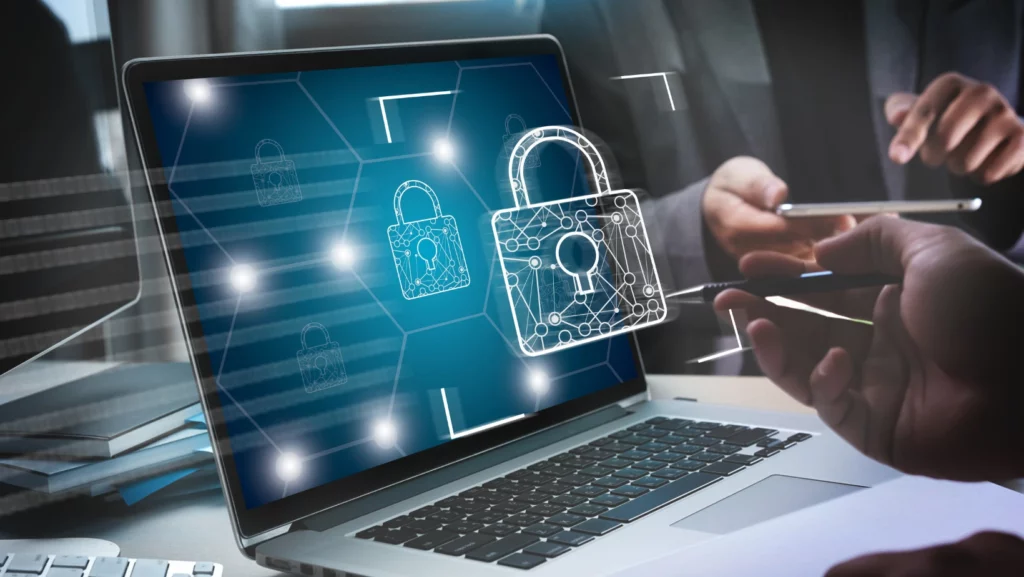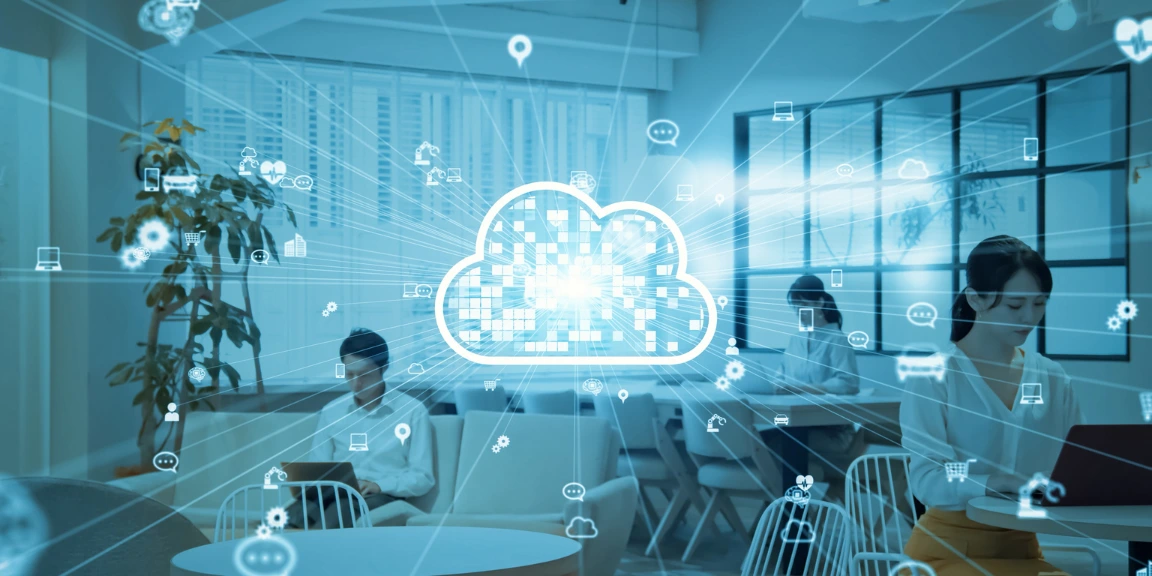Software as a Service (SaaS) has become a cornerstone for enterprises globally in the digital era. SaaS security is a term for methods, processes, and technology that assure the protection of data and applications housed in the cloud. The significance of Software as a Service security cannot be emphasized, as it protects these platforms against data breaches, unauthorized access, and other cyber threats, while also maintaining the integrity and confidentiality of critical data.
Understanding SaaS Security
SaaS security is the practice of protecting cloud-based software applications and the data they process. It includes a variety of methods ranging from encryption to access control to threat detection. Understanding what is SaaS security is critical for firms that use or provide these applications.
SaaS cloud security plays a critical role in safeguarding online data. Cloud-based security measures are essential for protecting against threats and ensuring data integrity in the cloud environment. The distinction between SaaS Cyber Security and Cloud SaaS Security is that the first focuses on protecting the app itself from cyber threats, while the second term refers to the broader spectrum of securing the cloud environment where the SaaS application resides.
Best Practices
Establishing a Robust SaaS Security Approach. A comprehensive cyber defense approach includes numerous levels of protection, from secure coding practices to user access management. Implementing best practices is critical in developing a secure posture.
Implementing SaaS Security Posture Management. Software as a Service cyber defense posture management involves continuous monitoring and assessment of the protective measures of these solutions. It helps in identifying vulnerabilities and ensuring compliance with industry and national standards.
Developing a Comprehensive SaaS Security Checklist. Creating a checklist is essential for addressing SaaS application security requirements systematically. This list should include such aspects as data encryption, user authentication, regular SaaS security audits, and incident response plans.
Technical Aspects of SaaS Security
SaaS Application Security Requirements. SaaS security requirements include guidelines and protocols designed to protect apps from cyber threats. Among these requirements are strong encryption mechanisms, secure coding practices, and regular vulnerability assessments.
Protecting Data. SaaS data security focuses on safeguarding sensitive data within Software as a Service applications. It involves encryption, access controls, and secure data storage practices to prevent unauthorized access or data breaches.
SaaS Stack Security and Container Security. Stack security refers to the protection of the entire tech stack used in a SaaS app development. SaaS container security specifically deals with securing containers, which are a key part of modern cloud-based solutions, from various threats.
Addressing SaaS Cyber Defense Challenges

Identifying and Mitigating SaaS Security Risks and Issues. Understanding and mitigating cyber security SaaS risks and potential issues is vital for ensuring the integrity of applications. This involves regular risk assessments, constant threat monitoring, and implementing proactive defense measures to address potential vulnerabilities.
Understanding and Managing SaaS Security Concerns. SaaS security issues are often connected with data privacy, compliance, and threat vulnerabilities. Effective management of these concerns requires a combination of tech solutions and strategic policies to ensure comprehensive data protection and regulatory compliance.
SaaS Security Standards and Certification. Adhering to standards and receiving relevant SaaS security certifications are critical for establishing trust and credibility. Standards such as ISO/IEC 27001 and certifications like SOC 2 provide frameworks for implementing robust data protection practices.
SaaS Security Solutions
Cyber security SaaS solutions offer cloud-based tools and services to enhance the cyber defense of these applications. These solutions range from threat detection systems to compliance management tools, providing comprehensive protection for SaaS environments.
1. Identity and Access Management (IAM)
- IAM systems manage user profiles and control access to resources within Software as Service applications. They play a pivotal role in verifying user identities and ensuring that access to resources is restricted. Main features include single sign-on (SSO), multi-factor authentication (MFA), and user access policies. These measures lead to enhanced protection through controlled access, reduced risk of unauthorized access, and regulatory compliance.
2. Data Encryption
- Encryption safeguards data both at rest and in transit, making it unreadable to unauthorized users. Utilizing strong encryption standards like AES (Advanced Encryption Standard) and SSL/TLS for data in transit protects sensitive data from breaches and ensures privacy compliance.
3. Firewall and Intrusion Detection Systems
- Firewalls act as a barrier between the Software as a Service environment and external threats, while intrusion detection systems monitor for suspicious activities. This includes traditional firewalls, web application firewalls (WAFs), and next-generation firewalls that incorporate AI and machine learning features. The main advantages are early detection of threats, prevention of unauthorized access, and enhanced SaaS network security.
4. Endpoint Security
- Protects end-user devices accessing the application, which can be a vulnerability point. Includes antivirus software, device management solutions, and secure mobile access. Secures multiple entry points, reducing the risk of device-based threats.
5. Compliance Management Tools
- These tools help Software as a Service providers and users ensure that their platforms and data handling practices comply with relevant regulations like GDPR, HIPAA, etc. Regular compliance audits conducted by SaaS cyber security company, reporting tools, and automated compliance checks lead to avoidance of legal penalties, enhanced trust with customers, and adherence to regulatory standards.
6. Security Information and Event Management (SIEM)
- SIEM solutions collect and analyze data from various sources to identify potential incidents. Real-time SaaS security monitoring, log management, and event correlation provide insights into cyber defense posture, help with quick incident response, and enhance overall awareness level.
7. Cloud Access Security Brokers (CASBs)
- CASBs sit between cloud service users and cloud service providers to monitor activity and enforce protection policies. Visibility into cloud app usage, data security in SaaS, and threat protection extend cyber defense policies, ensure cloud security SaaS usage, and offer comprehensive visibility into SaaS operations.
8. SaaS Security Posture Management (SSPM)
- SSPM tools assess and manage the cyber defense posture of SaaS applications. Configuration management, continuous monitoring, and compliance assessment ensure that Software as a Service platforms are configured securely, minimize the risk of misconfigurations, and help with ongoing compliance maintenance.
9. SaaS Security as a Service
- This approach involves outsourcing data protection aspects to third-party providers specializing in Software as a Service platforms. Security as Service in SaaS industry provides access to expert knowledge, cost-effective SaaS security management, and ensures staying up-to-date with the latest cyber defense trends and threats.
10. Vulnerability Assessment and Penetration Testing (VAPT)
- Identifies potential weaknesses and tests the robustness of applications against attacks. Top SaaS security companies implement regularly scheduled assessments and ethical hacking techniques that lead to early identification of vulnerabilities, prevention of their exploits, and strengthened overall cyber defense posture.
11. SaaS Kubernetes Security
- Secures Kubernetes environments which are increasingly used for container orchestration in cloud-based applications. The main features are network policies, data protection policies, and Kubernetes-specific vulnerability management.These measures safeguard containerized applications, ensure secure orchestration and deployment, and maintain the integrity of the platform’s environment.
12. AWS SaaS Security.
- AWS SaaS provides specific tools and practices for securing applications hosted on Amazon Web Services, a leading cloud service provider. AWS provides IAM tools, offers several encryption solutions like AWS Key Management Service (KMS) and AWS Certificate Manager, and complies with many certification and assurance programs, helping users meet compliance requirements for virtually every regulatory agency around the globe.
Selecting the right SaaS security company is crucial for ensuring robust cyber defense. Top SaaS cyber security companies offer advanced solutions and expertise in protecting SaaS environments, and their evaluation should be based on factors like technology, experience, and customer reviews.
Compliance and Assessment
SaaS security compliance involves adhering to legal and regulatory requirements related to data protection and privacy. Regulations like GDPR and HIPAA set standards for handling sensitive information in SaaS applications and SaaS security testing.
Regular SaaS security assessments and audits are essential for identifying vulnerabilities and ensuring compliance with data protection policies. These assessments provide insights into the effectiveness of current measures and areas that require improvement.
The Future of SaaS Security
As the SaaS (Software as a Service) model continues to gain traction in the digital economy, its cyberdefense landscape is rapidly evolving. The future of security for SaaS applications is shaping up to be an arena of innovative technologies, enhanced strategies, and new challenges. Here’s an overview of the key trends and predictions:
1. Increased Reliance on Artificial Intelligence and Machine Learning
- AI and ML are increasingly being integrated into SaaS defense solutions for predictive analytics, anomaly detection, and automated threat response.This will lead to more proactive and intelligent data protection systems capable of identifying and neutralizing threats even before they manifest.
2. Enhanced Focus on Data Privacy and Compliance
- With regulations like GDPR and CCPA in effect, there’s a growing emphasis on data privacy. Future SaaS cyber defense will likely include more robust data protection features, compliance tracking tools, and transparency in data processing and storage.
3. Rise of Zero Trust Models
- The Zero Trust model, which operates on the principle of “never trust, always verify,” is becoming a staple in security SaaS solutions. This approach will minimize the risks of internal threats and data breaches by ensuring strict access controls and continuous validation of all users and devices.
4. Advancements in Endpoint Security
- As remote work becomes more prevalent, securing endpoints—devices accessing Software as a Service applications—becomes critical. We can expect more sophisticated solutions, offering advanced threat detection capabilities and secure access controls.
5. Integration of Blockchain Technology
- Blockchain could potentially be used for enhancing data integrity and cyber security in SaaS platforms. This would revolutionize data verification processes, make transaction records tamper-proof, and provide a new level of protection for sensitive information.
6. Cloud-Native Solutions
- The shift towards cloud-native architectures (especially AWS security architecture) in SaaS is leading to the development of solutions specifically designed for the cloud SaaS security assessments and mitigation. These solutions will offer more flexibility, scalability, and effectiveness in SaaS security in cloud computing.
7. Emergence of SaaS Cyber Defense Specialization
- As SaaS applications become more complex, specialized cyber defense solutions tailored to specific SaaS applications or industries are likely to emerge. This specialization will allow for more targeted and effective measures, addressing the unique requirements of different SaaS platforms.
8. Expansion of Security as a Service in SaaS (SecaaS)
- The SecaaS model is gaining momentum, offering data protection services on a subscription basis. This will provide organizations of all sizes access to high-level security SaaS providers, democratizing access to advanced defense technologies.
9. Greater Emphasis on User Education and Awareness
- As human error remains a significant vulnerability, there’s an increasing focus on user education. Future SaaS security considerations will likely include more comprehensive training programs and awareness campaigns for end-users.
10. Adoption of Quantum-Resistant Cryptography
- With advancements in quantum computing, there’s a looming threat to current encryption methods. The adoption of quantum-resistant cryptography will become crucial to protect data against future quantum computing-based attacks.
Conclusion
Sustaining good cloud-based application cyber defense posture requires constant learning and adaptation in the ever-evolving world of technology. Maintaining the continuous defense of SaaS apps and user data requires keeping abreast of emerging trends, periodically evaluating protocols, and adjusting to new threats.

